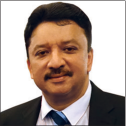Translate this page into:
Protecting the Volunteering Healthcare Providers in COVID-19 from Secondary Nosocomial Infections

*Corresponding author: S. M. Balaji, Department of Oral and Maxillofacial Surgery, Balaji Dental and Craniofacial Hospital, Chennai, Tamil Nadu, India. smbalaji@gmail.com
-
Received: ,
Accepted: ,
How to cite this article: Balaji SM. Protecting the Volunteering Healthcare Providers in COVID-19 from Secondary Nosocomial Infections. J Global Oral Health 2021;4(1):1-2.
The spread of the novel COVID-19 virus has disrupted the world as we knew it in the first two decades of the twenty-first century. The viral epidemic and the global reaction to its dissemination have wreaked havoc on billions of people’s personal and professional lives, ignoring geopolitical boundaries. It has compelled nations all over the world to respond rapidly to a modern, current, relevant reality marked by rising pandemic-induced death rates, lockdowns, social distancing, and teleworking.[1] Academicians, policymakers, and government officials called for the official government response to this crisis to involve non-state actor participants, including individuals, civil society, community and nongovernmental groups, and other network stakeholders, both during and after the initial wave of viral spread. Coproduction can be described as a method of cooperation between the government, volunteers, and community groups. The outcomes of this collaboration would be positive.[1]
Volunteering is an important aspect of such coproduction since coproducing volunteers voluntarily deliver specific public services to their own populations without receiving any monetary reward. Working alongside volunteers and charitable organizations to deliver neighborhood health care has the power to address critical holes and save the community from being overburdened during crises like COVID-19. However, the government’s capacity to efficiently use volunteers and align volunteer coproducers with relevant assignments is a major obstacle to public volunteerism.[1-3]
A large number of global oral health care professionals are trained/well exposed to the complexities of general public health care delivery, including but not limited to sample processing and delivering urgent health care, as part of their clinical preparation.[2] This group of healthcare workers will serve medical practitioners in admissions wards, outpatient clinics, and emergency rooms, as well as provide logistical support in COVID-19 diagnostic laboratories. This one-of-a-kind force will be used to fill a critical shortage of qualified health care practitioners with very little preparation and briefing. Oral health care service could not be hampered at the same time.
During the COVID-19 pandemic, medical volunteering as a co-producer by an oral health care provider can be viewed as a risky practice, particularly in resource-constrained environments. Some scholars have often viewed it as an insignificant sacrifice. The COVID-19 pandemic has gotten a lot of attention in the news and on social media, with alarmist terms like “deadly outbreak” or “monster virus,” click-bait tactics, and the spread of unsupported reports frequently exacerbating already high public fear. Altruistic tendencies are often displayed at the same time.[4,5]
Oral health care professionals’ coproduction is expected to become more relevant in the future if the pandemic persists for the long term. If the long-term implications of COVID-19 begins to be felt by states, there will be a greater need to engage qualified citizens - oral health care volunteers and neighbourhood organizations in capacity building for better healthcare delivery. In an unforeseen magnitude, this pandemic necessitates individual participation in the achievement of policy goals. We must pave the way for future studies by considering the possibility of more consistently incorporating seasoned local oral health volunteers, collaborating across voluntary organizations and government departments, to address acute societal health care needs.
In the pso-COVID19 situation, there are reports of local outbreaks of secondary bacterial, fungal and viral infections.[6-9] Such outbreaks should be closely monitored. There are instances of Mucormycosis and Candida auris that are being increasingly reported in certain COVID19 units and populations.[9,10] As a volunteer or a care provider or as an health assistant, the dental and oral health care professional should make themselves aware of the new local health hazards that, if ignored would cause significant morbidity. Emergence of COVID19 related infections are on the raise. Such infections, when caused by drug resistant entities may harm the care provider more. Hence, extreme caution should be exercised while interacting with patients and population that have a higher degree of such microbes. Volunteerism is a noble deed and we are in need of trained medical hands to wade of the pandemic. At the same time, to sustain the medical resources, we need to be safe and ensure that we don’t get infected by the virus or the other potential pathogens that are common among COVID19 infected populace.
References
- Responding to COVID-19: Community volunteerism and coproduction in China. World Dev. 2020;2020:105128.
- [CrossRef] [PubMed] [Google Scholar]
- Medical students as the volunteer workforce during the COVID-19 pandemic: Polish experience. Int J Disaster Risk Reduct. 2021;55:102109.
- [CrossRef] [PubMed] [Google Scholar]
- Shining the light on altruism and its potential impact for behavior change strategies related to the COVID-19 pandemic and beyond. Health Commun. 2021;2021:1-3.
- [CrossRef] [PubMed] [Google Scholar]
- Involving patients in their own health care choices altruism begets altruism. JAMA Netw Open. 2021;4:e210152.
- [CrossRef] [PubMed] [Google Scholar]
- Fungal infections of oral cavity: Diagnosis, management, and association with COVID-19. SN Compr Clin Med. 2021;2021:1-12.
- [Google Scholar]
- Oral candidiasis of COVID-19 patients: Case report and review of evidence. J Cosmet Dermatol. 2021;20:1580-4.
- [CrossRef] [PubMed] [Google Scholar]
- Profile of co-infections and secondary infections in COVID-19 patients at a dedicated COVID-19 facility of a tertiary care Indian hospital: Implication on antimicrobial resistance. Indian J Med Microbiol. 2021;39:147-53.
- [CrossRef] [PubMed] [Google Scholar]
- Mucormycosis in COVID-19: A systematic review of cases reported worldwide and in India. Diabetes Metab Syndr. 2021;2021:19.
- [CrossRef] [Google Scholar]
- Molecular epidemiological investigation of a nosocomial cluster of C. auris: Evidence of recent emergence in Italy and ease of transmission during the COVID-19 pandemic. J Fungi. 2021;7:140.
- [CrossRef] [PubMed] [Google Scholar]





